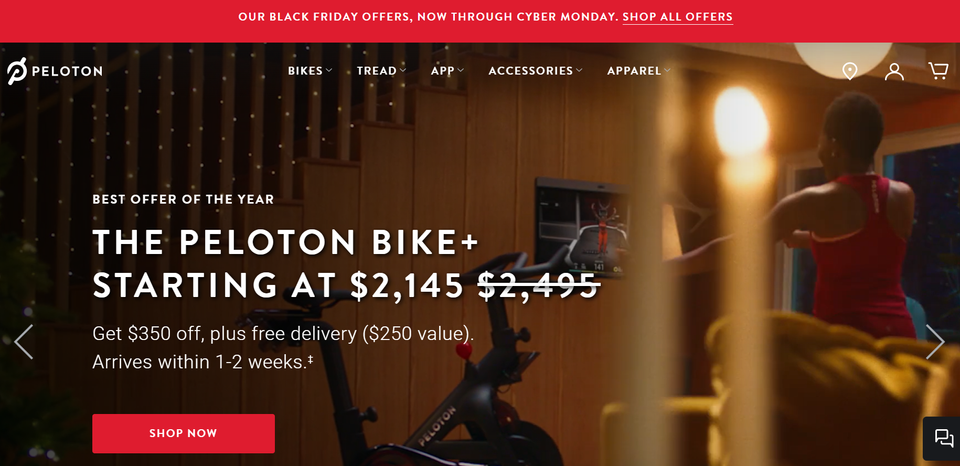I can hear it now: DTC brands are ecommerce brands! Well, DTC is technically a part of the ecommerce ecosystem, but has set itself apart. And understanding how DTC companies approach ecommerce can be very insightful to ecommerce teams. So I thought I would pull together a handful of the lessons I’ve learned working for the last year at a DTC company (after a *ahem* lot of years in ecommerce). The differences are subtle, but I think ecommerce leaders can learn a lot from their DTC offspring.
Focus on the Customer Experience
This sounds like a silly point, but it’s critical to understand. Ecommerce teams often focus on the site experience and the merchandise and how customers go through the website. DTC companies tend to focus on the overall customer experience and/or customer journey towards purchase. They aren’t tied down to the typical ecommerce flow because they are more focused on the product journey. So they have a chance to rebuild pieces of the site in very different ways.
Instead of trying to make everything perfectly consistent across your site, allow certain areas to feature different category pages. Or completely different product detail pages. Survey customers who are looking for a specific product and understand exactly what they need to know before buying. Then create the content to give it to them.
The short version is this: instead of designing your site, get into the weeds and design experiences just for a small section of your site. Don’t get tied down by how the rest of the website looks, make one section perfect for the customers in that section. Good example is Trifecta Nutrition. Each page feels custom.
Key Product is more important than Selection
DTC companies tend to focus on great product rather than selection. Huge selection causes consumer indecision. It increases pressure on the merchants to showcase the right product in the right spot. And if you’re not careful, a new sku will take sales away from an already well performing sku. You cannot stop introducing products. But you can focus on introducing skus that are likely to become winners – and avoiding skus that aren’t.
Don’t sell garbage. Keep the crap off your site. Focus on products that solve your customer’s problems and limit yourself from adding every version of an item on your site. One interesting site to watch is Wayfair. Wayfair is doing a great job of building out skus while keeping the selection curated. They don’t sell 15 of anything. They offer a solution for each style/design and they offer a strong price point. But that’s it. Seems like the right way to compete with Amazon/Walmart. You will never have a better selection of anything than Amazon, so don’t try.
Give your consumers products that solve their problems, but also give them confidence by eliminating the skus that will not solve their problems. Sometimes what you don’t sell matters more. And DTC companies do this much better than ecommerce companies.
I hear a lot of people say that the digital shelf is free, but that misses the bigger point: consumer attention is critical. And you need to invest in each sku to drive consumer attention and consumer confidence in the purchase. It’s far better to invest 10x the time and creative in one great sku than invest 1x the time in 10 skus when only one is going to pop. Focus and say "no" more often to new additions.
Blow out the Product Detail Pages
Similar to the above point: content rich product detail pages matter. This is tougher for ecommerce folks because they typically have a million skus. DTC companies do an amazing job of building out a content-rich, keyword-rich product detail page. If a product is worth selling, it’s worth investing in a longer form product detail page. This is critical to gaining consumer confidence and driving a lot of SEO traffic (reducing CAC) to a page. It’s fascinating to see the impact of this investment on a site versus investing time/effort in adding additional, content-lite skus. Focus on building out what’s working. Examples of killer product detail pages? Organifi or Casper both are good examples. What about this Smile Direct Club page? Is that a product detail page? Who cares. Stop thinking in boxes.
If you have a great sku that is selling, add fuel to the fire by blowing out the content detail page. You can 10x visits and sales on a good sku by doing this. This is an excellent test for ecommerce companies: pick your top skus and build them out. See the impact in your data. Another to see: Trifecta Nutrition. Yes, that’s an Item Detail page.
Don’t be confined by Ecommerce
DTC companies can’t rely on general traffic hitting their site. They need to pull customers in and can’t afford to lose them. Ecommerce companies discovered the power of a funnel early on – virtually all ecommerce companies have made the checkout a funnel with limited exit points. Guess what? This concept works in a lot of areas. If you know the customer searched for a specific type of product, driving them through a funnel to pick their favorite and checkout can work. And can work well. Much better than dropping them on a category page and forcing them to figure it out. Take a look at how StitchFix leads customers through a funnel before they show you products. Pretty cool.
Again, if you have a killer set of products, try building out a funnel and asking the customer a couple of questions before recommending the best solution for them. This is old school retail where the store manager helps the customer with their selection. It worked in the 1800’s and it works now. Customers want advice and are more likely to buy if you confirm which product will work best for them. It’s something you should definitely try if you’re trying to sell online.
In ecommerce you can’t do this for every category, but you can for the big ones. Figure out how to make sure your customer gets exactly the right product for their needs. For example, is this Grove Collaborative page an item detail page? Or a checkout? It’s hard to tell.
Film It without the Brand Police
And film it today. The web is moving towards video and ecommerce is way behind the curve for the most part. When we decide to film something, we run it by the brand team, attorneys, the creative team, and even the merchants. Gaining consensus kills creativity and turns us into turtles.
Small DTC companies whip out their iPhones and film shit. Then they post it on Instagram Stories, Snap, Tiktok, etc. And it works well. In fact, I’m seeing a decent amount of data that says unpolished outperforms polished. The brand lovers panic when I say stuff like this. But you are not Chanel. Having video is way more important than having perfect video. Perfection is the enemy of achievement.
For you to learn how to use video to grow and convert your customers, you have to start using video. Let it be ugly at first. Record 50 ugly short clips and post them. If any of them perform well, let the brand team re-record them in beautiful high fidelity at $50k a video. But until something clearly works, don’t invest heavily in the concept. Prove it first, then invest. Your career and your company’s success depend on you figuring out video before the web becomes all video. Bonus tip: try a video version of the main image on product detail pages. Your customers now have the bandwidth to enjoy it.
Conversion rate 10x
Don’t accept that your customers will convert at 2%. Ever. At Plum, we ran a program that converted at just over 25%. That’s right. It’s possible to convert at over 10x the normal rate ecommerce companies expect. But to do it, you have to get into the weeds and do all of the above: find intent based keywords, build a killer landing page and funnel, expand the content to give customers confidence in the purchase, and drive only the right people into it.
This is hard in ecommerce, but can be done. Pull in a handful of young, ambitious folks from your team (two pizza team) and give them a specific target area to upgrade. Let them build a funnel with questions and content to focus just on that. Let them build out a nurturing program for anyone who drops into that funnel. And watch the magic come. It is possible – I’ve seen it happen. Ecommerce folks typically make a mistake by not driving harder to convert every individual person. This is not a 100% site conversion rate, it’s a 100% individual conversion rate. Some customers take time to convert. Give them confidence and then give them space to get ready to buy.
It's time to try stealing some ideas from DTC companies. So do it.

